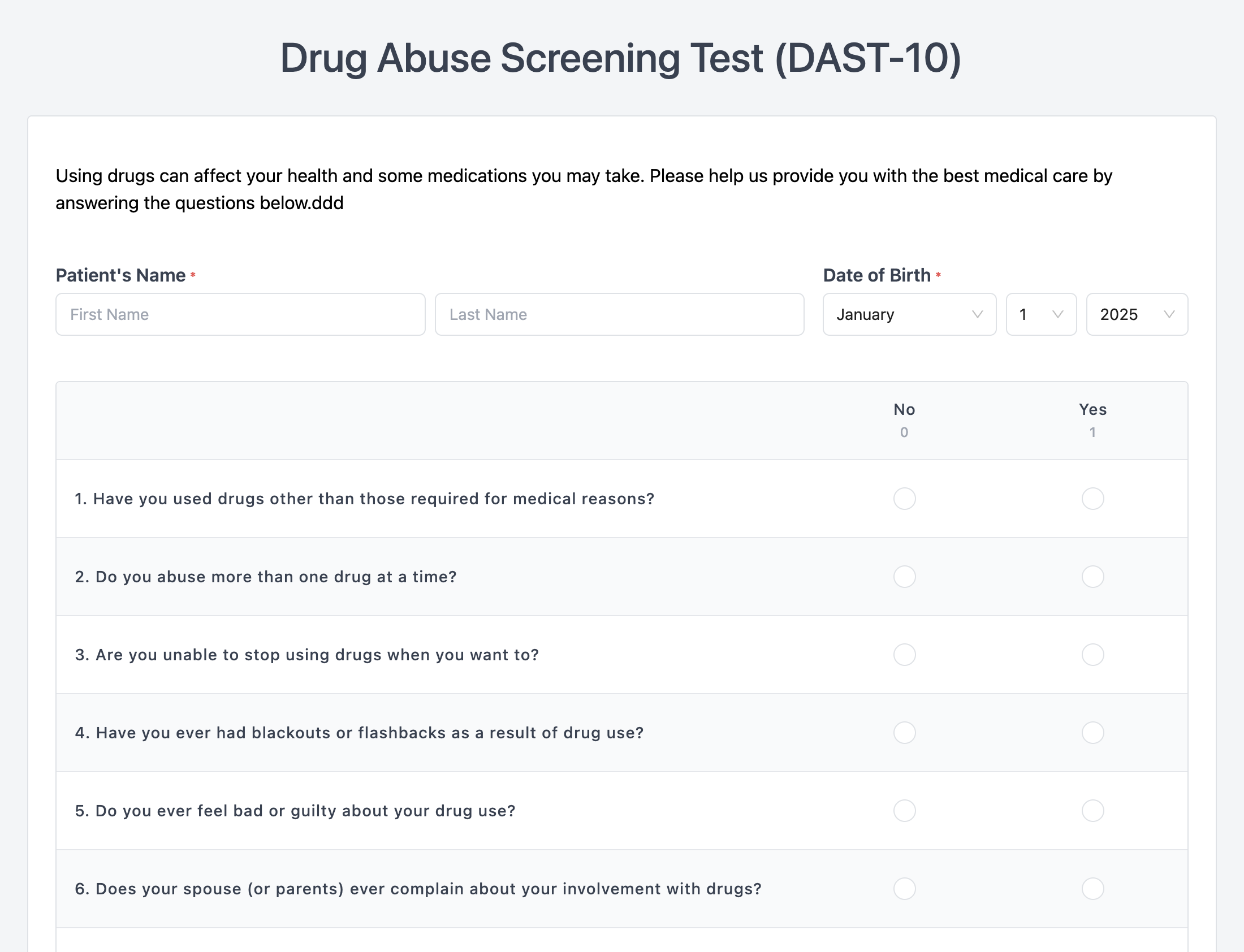

The Drug Abuse Screening Test (DAST-10) is a brief, validated self-report questionnaire used to identify drug misuse and potential substance use disorders. It helps healthcare providers assess the severity of drug-related problems (excluding alcohol and tobacco) and determine the need for further evaluation or treatment.
Quick and Effective Screening
Identifies risky or harmful drug use behaviors in under 5 minutes, supporting early intervention.
Validated and Widely Used
Backed by decades of research, the DAST-10 offers reliable and consistent results across settings.
Supports Behavioral Health Integration
Facilitates identification of substance use concerns in primary care, mental health, and specialty clinics.
Treatment Planning and Referrals
Scores provide a clear framework for deciding when to refer patients to substance use treatment services.
Meets Screening Recommendations
Aligns with guidelines for routine substance use screening in adolescents and adults.
Primary Care Clinics
Routine behavioral health screening during annual physicals or chronic care visits.
Mental Health and Psychiatry Practices
Identifies co-occurring substance use concerns alongside depression, anxiety, or other disorders.
Addiction and Recovery Centers
Serves as an intake and progress tracking tool in substance use treatment programs.
Emergency Departments and Urgent Care
Screens for drug-related behaviors during acute care visits.
Pain Management Clinics
Monitors for potential misuse of prescribed or non-prescribed substances.
10 Yes/No Questions:
Focus on drug use over the past 12 months, covering areas such as:
Scoring System:
Each “Yes” = 1 point. Total score range: 0–10
Interpretation Guidelines:
Routine Screening:
Administer during preventive visits, behavioral health assessments, or when substance use is suspected.
Confidentiality Assurance:
Encourage honesty by ensuring private, non-judgmental environments.
Follow-up and Referral Workflow:
Have clear procedures in place for high scores, including motivational interviewing, SBIRT, and referral to treatment.
EMR Integration:
Document scores, interpretation, and any follow-up actions in the patient’s medical record.